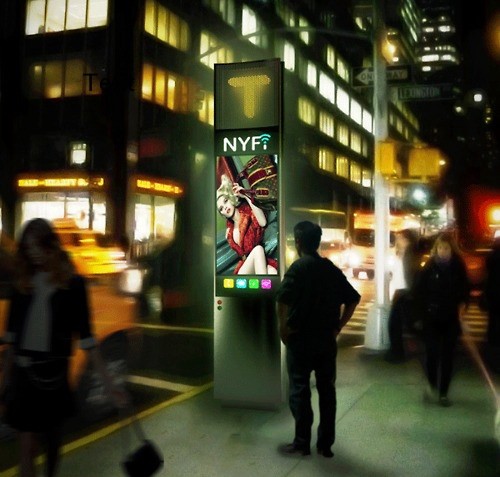The Shape of Internet for All

New York City is going to replace its ninety-six hundred or so public pay phones, which obviously nobody uses anymore because a) who even talks on the phone and b) on the occasions when people do speak into a small grill to transport their voices across time and space, it’s typically one that they carry with them except c) people who can’t afford miniature computers or the oppressively priced monthly service plans that allow them to work. They’re going to be supplanted by some ten thousand “public communications structures” that will provide free Wi-Fi to anyone, so long as he or she stands close enough to view the digital advertisements plastered on the side of the kiosks.
Ads will ostensibly allow whichever company wins the contract to make money — hopefully enough that access can remain free without needing to sell or otherwise exploit the personal information of the vulnerable population of people who will actually need the kiosks for their broadband access. Or worse, going essentially broke like Alta Bicycle Share, the company that operates CitiBike, a program with lots of users but that hasn’t been able to sustain itself and is maybe on the brink of disaster. It would be pretty great if the free Wi-Fi flooding the streets of the New York wasn’t super slow, either, like the Wi-Fi at Starbucks or on airplanes, which is the absolute worst, especially when it’s free because some crusading advertiser like Google sponsored it — ruining it even for the people who’d actually be willing to pay fifteen dollars for the Internet on a plane. Seriously, it’s so slow that even Twitter won’t load and when that is the case, why are you even on the Internet at all?
